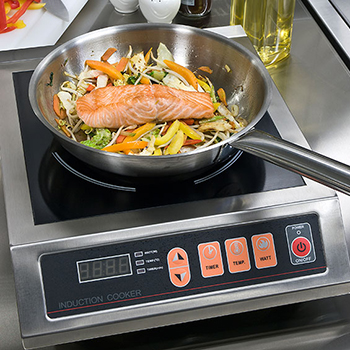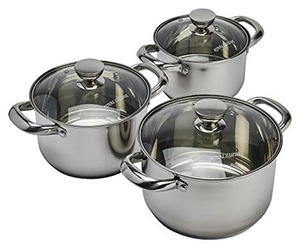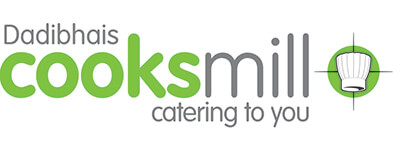What is induction cooking?

Induction cooking has increased in popularity in recent years, as more and more people recognise the benefits this style of cooking can bring. But, what is it exactly, and why should you make the switch?
Induction cooking explained
Induction cooking uses direct heat to warm up a pan, rather than an indirect source such as a gas flame or an electrical element.
Underneath the ceramic plate of an induction hob lies a coil of copper wire. When a compatible cooking pan is placed on the hob, an alternating electric current passes through it. This causes a magnetic field to create an electric current in the cooking pan, where the radiant energy in the pan then transfers to the food, heating it up.
It can take a while to get used to cooking on an induction hob, as there are no visible signs that it's on, such as a flame, red coil or hot surface, although, it can make a slight humming sound. But, once you get used to this, many people wouldn't choose any other way to cook.

Types of cookware used
There are specific requirements about the type of pans you can use with induction cooking, so if you're new to this style of cooking, you may need to purchase new induction compatible cookware. Crucially, pans need to have a magnetic base to work on an induction hob, so if a magnet sticks well to the bottom of your pans, chances are they'll be a good match for induction cooking!
Look for pans with high ferrous metal content, especially at the base. Typically, cast iron pans and those made from some types of stainless steel (without nickel) are the most compatible for induction cooking. Copper and aluminium pans aren't suitable unless they have magnetic layers added to the base. To ensure the magnetic field can pass through to the pan, cookware should also have a flat base.
When purchasing new cookware, look for labels that say the pans are induction compatible. Such pans can usually be used on other types of stoves as well.
Safety
One of the reasons that induction cooking has started to gain such a big following is that it is an incredibly safe way to cook. Because the pan is heated by electromagnetic currents, the surface of the hob doesn't get hot. Without any gas flames to contend with, this method of cooking is less of a fire hazard.
Once a pan is removed from the surface, the cooking element can also automatically switch off, so you don't accidentally leave it on.
However, something to bear in mind - if you wear a pacemaker, the electromagnetic field from the induction hob may interfere with the device, so it's advised to keep a distance of around 60 cm from the appliance when cooking.
Efficiency
What also makes induction cooking such a favourable choice is that it scores top marks for energy efficiency. Because the heat that gets generated goes directly to the pan, no energy is lost to the surrounding environment. The energy transfer of an induction hob is said to be around 84%, compared to 74% for ceramic electric or gas.
The heating process is also much more immediate. As soon as you turn it up or down it reacts instantly, meaning there's less wasted energy waiting for a pan to warm up. Studies have shown it's 50% faster to heat up a pan using the induction method compared to a gas hob. It's also easier to control the cooking using an induction hob, as the temperatures remain more even compared to using gas and electricity.
The benefit of heating the pan evenly without creating hotspots also ensures that food, and the pans used, don't scorch or burn. This can help to keep pans in good condition, improving their longevity.
Although the initial outlay to switch to induction cooking can be expensive, savings can be made in the long run by the efficiencies in energy.

Easy to clean
Chefs and cooks in both domestic and commercial kitchens appreciate the fact that induction hobs are super easy to clean, requiring only a simple wipe with a soapy cloth.
As well as being easy to look after, induction hobs are a doddle to use, whether you're an amateur cook or an experienced chef. You just press a button to indicate which level of power you require for cooking. Plus, some types of induction hobs allow you to activate the whole hob so that you can place a pan anywhere you want on the surface.
If you're looking for the ideal pans for your induction hob, you'll find just what you need at Cooksmill.

Here at Cooksmill, we have an extensive range of both induction hobs and induction cookware that are suitable for front of house and in the kitchen. To learn more then simply visit our website today to shop online or visit our Manchester store. Delivery is free on orders over £50 ex vat with thousands of items available for fast courier delivery when you shop online.
